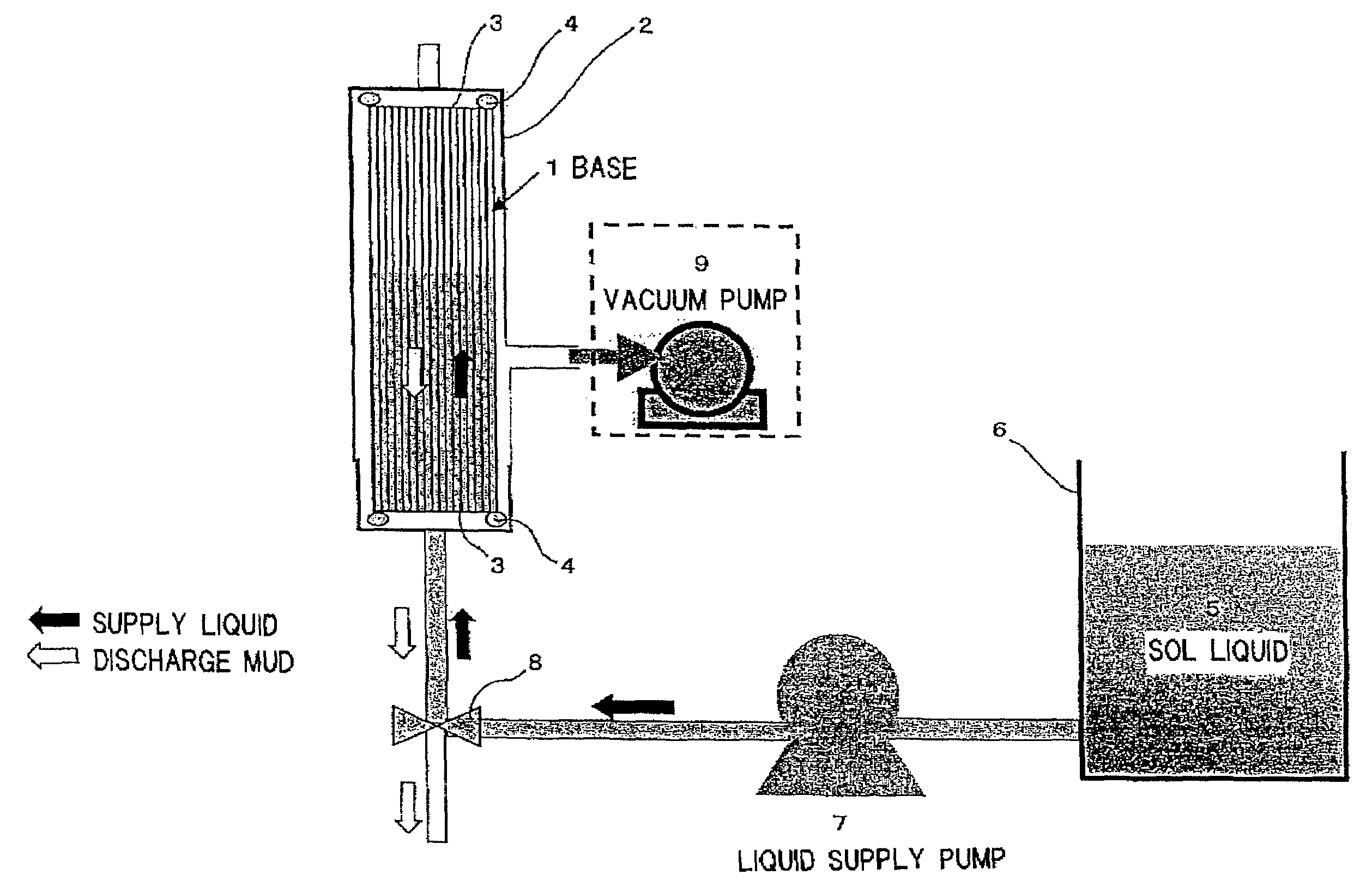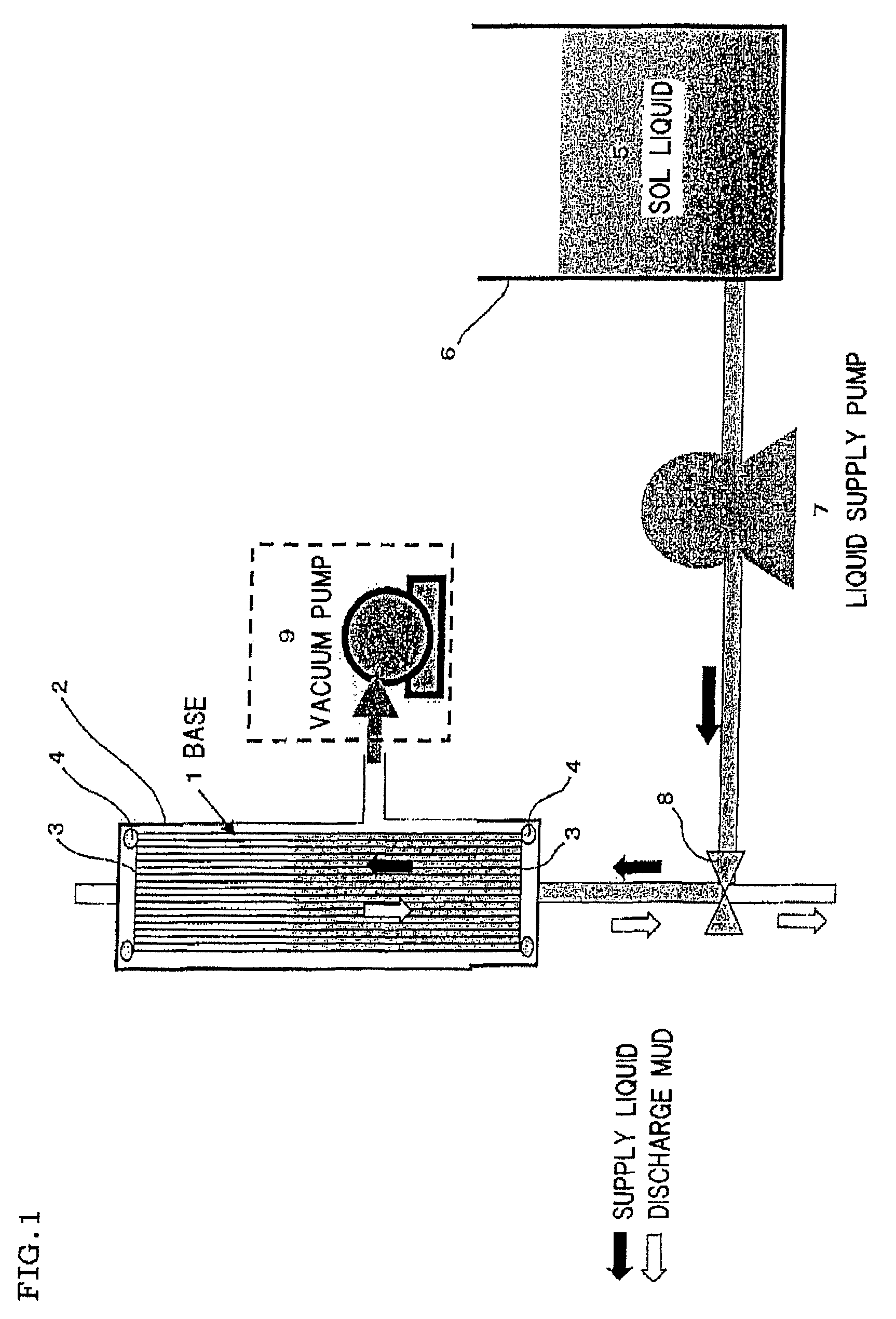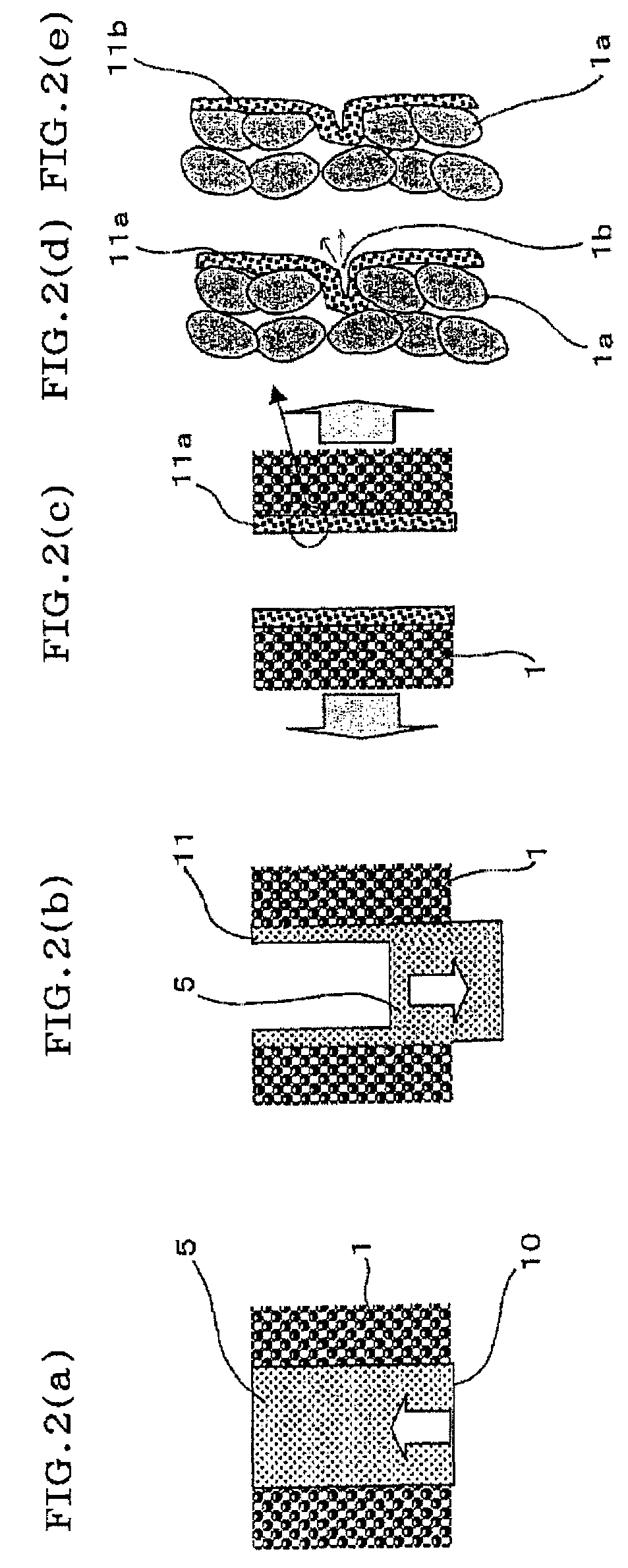Method of manufacturing ceramic porous membrane
a technology of porous membrane and ceramics, which is applied in the field of manufacturing a ceramic porous membrane, can solve the problems of generating defects in the porous membrane formed on the fired base surface, the inability to apply the process to the inside of the monolith base having the tubular or cylindrical lotus root-like shape, and the inability to uniformly form the membrane on the whole base surface. , to achieve the effect of less membrane formation times, less coarse and large pores, and excellent
- Summary
- Abstract
- Description
- Claims
- Application Information
AI Technical Summary
Benefits of technology
Problems solved by technology
Method used
Image
Examples
example 1
[0048]1. Porous Base Member
[0049]A porous base member provided with a titania membrane having an average pore diameter of 8 nm and having a lotus root shape (an outer diameter of 30 mm, a length of 1000 mm and 37 cells: an inner diameter of 3 mm of through holes) was used. It is to be noted that opposite end portions of the base member are sealed with glass (e.g., see Japanese Patent Application Laid-Open No. 62-4411).
[0051](Sol Liquid A)
[0052]Titanium isopropoxide was hydrolyzed at a temperature of 80° C. for 30 minutes under the presence of nitric acid. Afterward, an aging treatment was performed at 90 to 100° C. for three hours, and 4 wt % of sol liquid A was obtained in terms of titania. A sol particle diameter measured by a dynamic optical scattering method was 100 nm.
[0053](Sol Liquid B)
[0054]Titanium isopropoxide was hydrolyzed at a temperature of 5° C. for one hour under the presence of nitric acid. Afterward, an aging treatment was performed at 40...
example 2
[0067]As a material of a porous base member, the same material as that of Example 1 was used, and the porous base member was prepared by the same method as that of Example 1 except that a sol liquid B was used as a sol liquid and both of the sol liquid and the base member had room temperature (20° C.)
example 3
[0068]As a material of a porous base member, the same material as that of Example 2 was used, and the porous base member was prepared by the same method as that of Example 2 except that a sol liquid C was used as a sol liquid.
PUM
| Property | Measurement | Unit |
|---|---|---|
| temperature | aaaaa | aaaaa |
| particle diameter | aaaaa | aaaaa |
| pore diameter | aaaaa | aaaaa |
Abstract
Description
Claims
Application Information
 Login to View More
Login to View More - R&D
- Intellectual Property
- Life Sciences
- Materials
- Tech Scout
- Unparalleled Data Quality
- Higher Quality Content
- 60% Fewer Hallucinations
Browse by: Latest US Patents, China's latest patents, Technical Efficacy Thesaurus, Application Domain, Technology Topic, Popular Technical Reports.
© 2025 PatSnap. All rights reserved.Legal|Privacy policy|Modern Slavery Act Transparency Statement|Sitemap|About US| Contact US: help@patsnap.com



